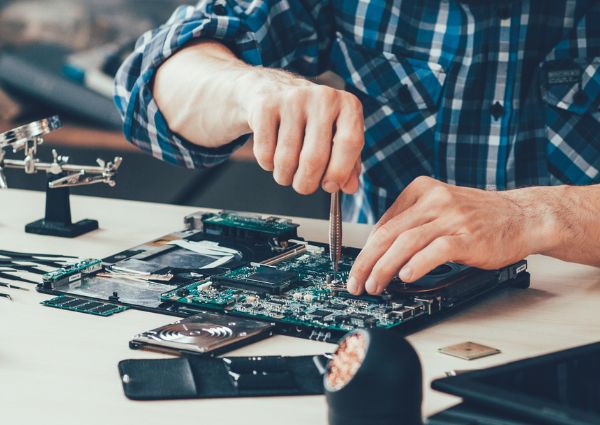Revolutionizing Tech: The Future of Hardware Design Services Unveiled

Innovation in technology has always been a driving force behind progress in various industries. From smartphones to smart homes, the demand for cutting-edge hardware design services continues to grow. As we look towards the future, it is clear that revolutionary advancements in hardware design will play a vital role in shaping the way we interact with technology. Let's explore the latest trends and developments that are set to revolutionize the tech industry.
The Rise of AI in Hardware Design
Artificial Intelligence (AI) Integration
- AI algorithms are increasingly being used in hardware design services to optimize performance and efficiency.
- Machine learning techniques are being deployed to analyze vast amounts of data and generate design solutions.
- This integration of AI in hardware design is streamlining the development process and leading to faster innovation.
Benefits of AI Integration
- AI-driven hardware design services can adapt to changing requirements and deliver customized solutions.
- Efficient use of resources and reduced design cycles result in cost savings for businesses.
- AI algorithms can identify potential design flaws early on, minimizing the risk of errors in the final product.
Advancements in 3D Printing Technology
Enhanced Prototyping Capabilities
- 3D printing technology is revolutionizing the way prototypes are created in hardware design services.
- Designers can quickly iterate and test multiple concepts, leading to faster product development cycles.
- Complex geometries and intricate designs that were previously challenging can now be realized with 3D printing.
Customization and Personalization
- 3D printing enables customization of hardware components to meet specific requirements.
- Personalized products can be produced at scale, catering to individual preferences and needs.
- This level of customization enhances user experience and opens up new possibilities for design innovation.
Internet of Things (IoT) Integration
Interconnectivity of Devices
- Hardware design services are incorporating IoT capabilities to enable seamless connectivity between devices.
- IoT integration allows for data sharing and communication between different hardware components.
- Connected devices can work together to provide enhanced functionality and user experience.
Smart and Sustainable Solutions
- IoT-enabled hardware designs are paving the way for smart and sustainable solutions in various industries.
- Energy-efficient devices, remote monitoring capabilities, and predictive maintenance are some benefits of IoT integration.
- Hardware design services that embrace IoT technology are driving efficiency and innovation in the tech landscape.
Enhanced Security Features
Cybersecurity Measures
- With the increasing threat of cyber attacks, hardware design services are prioritizing security features.
- End-to-end encryption, secure authentication protocols, and robust data protection are essential components of secure hardware design.
- By implementing stringent cybersecurity measures, hardware designers are safeguarding user data and privacy.
Biometric Authentication
- Biometric authentication features such as fingerprint sensors and facial recognition are becoming commonplace in hardware design.
- These advanced security measures enhance user authentication and protect devices from unauthorized access.
- Hardware design services are leveraging biometric technology to provide a seamless and secure user experience.
In conclusion, the future of hardware design services is poised for a paradigm shift with the integration of AI, advancements in 3D printing technology, IoT connectivity, and enhanced security features. As technology continues to evolve, hardware designers are at the forefront of innovation, driving forward progress and shaping the way we interact with the digital world.

